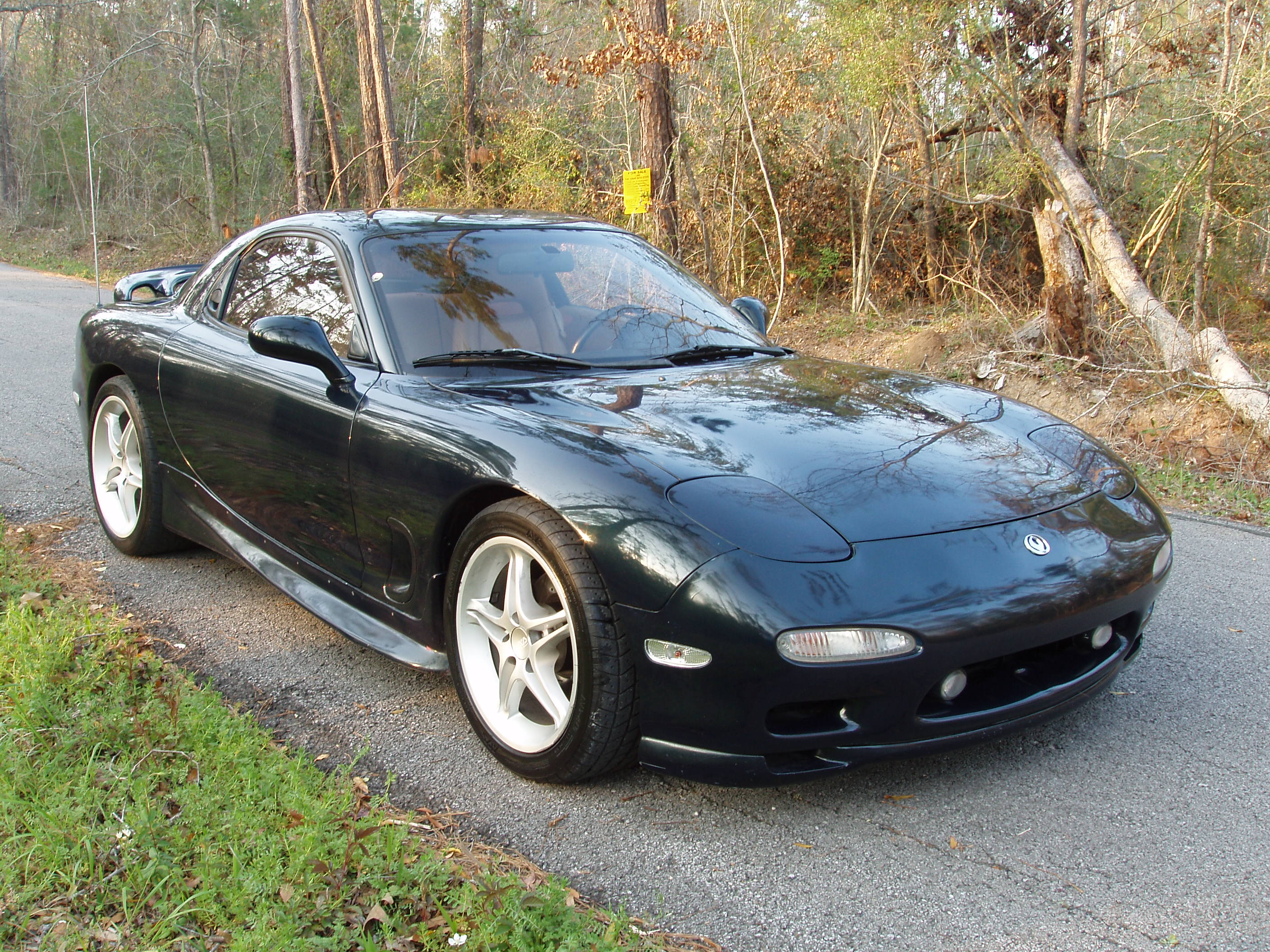Cars
_2002_Calsonic_Skyline_GT-R.jpg)
The Nissan Skyline GT-R (Japanese: 日産・スカイラインGT-R, Hepburn: Nissan Sukairain GT-R) is a Japanese sports car based on the Nissan Skyline range. The first cars named "Skyline GT-R" were produced between 1969 and 1972 under the model code KPGC10, and were successful in Japanese touring car racing events. This model was followed by a brief production run of second-generation cars, under model code KPGC110, in 1973. After a 16-year hiatus, the GT-R name was revived in 1989 as the BNR32 ("R32") Skyline GT-R. Group A specification versions of the R32 GT-R were used to win the Japanese Touring Car Championship for four years in a row. The R32 GT-R also had success in the Australian Touring Car Championship, with Jim Richards using it to win the championship in 1991 and Mark Skaife doing the same in 1992, until a regulation change excluded the GT-R in 1993.
The Mazda RX-7 is a front-engine, rear-wheel-drive, rotary engine-powered sports car that was manufactured and marketed by Mazda from 1978 until 2002 across three generations, all of which made use of a compact, lightweight Wankel rotary engine. The first-generation RX-7, sometimes referred to as the SA (early) and FB (late), is a two-seater two-door hatchback coupé. It featured a 12A carbureted rotary engine as well as the option for a 13B rotary engine with electronic fuel injection in later years. The second-generation RX-7, sometimes referred to as the FC, was offered as a two-seater coupé with a 2+2 option available in some markets, as well as in a convertible body style. This was powered by the 13B rotary engine, offered in naturally aspirated or turbocharged forms.

.png)
The Toyota GR Supra (model code J29/DB or A90/A91 for marketing purposes) is a sports car produced by Toyota since 2019. The fifth-generation Supra, the GR Supra was sold under and developed by Toyota Gazoo Racing (TGR) brand in collaboration with BMW. It is the successor of the A80 Supra, which ceased production in 2002. The GR Supra rides on a new jointly developed sports car platform by Toyota and BMW, with a short wheelbase, wide track, and low centre of gravity, that also underpins the G29 BMW Z4. Initially, BMW considered using a pre-existing platform of their own to underpin the new Supra, to which chief engineer Tada-san declined. Both cars are manufactured at the Magna Steyr plant in Graz, Austria.
The S14 Silvia debuted in Japan towards the end of 1993. It was lower and wider than the S13. New rounded styling contributed to the illusion of a greater increase in size than actually occurred. Wheelbase and track were both increased, leading to slightly improved handling. Unlike export markets, where sales of the S14 chassis variants faltered, the Silvia remained popular in Japan. However, the width dimension exceeded 1,700 mm (67 in), which pushed this generation out of the compact class tax bracket and made Japanese buyers liable for higher road taxes. Sales of the S14 also faltered because specialty car buyers at the time were moving to RVs and SUVs. The fastback and convertible bodystyles were discontinued internationally, leaving only the coupé in production.
.jpg)
_2002_Calsonic_Skyline_GT-R.jpg)

.png)
.jpg)